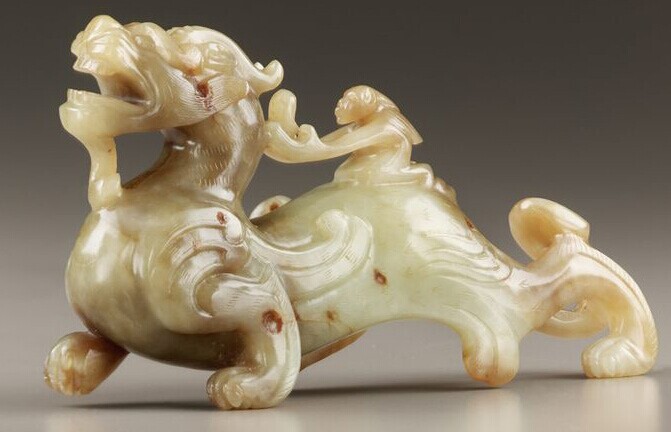Jade considered timeless symbol of virtue

Pale yellowish-green jade dragon in the Han Dynasty
The evolution of Chinese jade culture has progressed for thousands of years, keeping pace with the changing times. The development of society constantly pushed the advancement of jade culture to new heights of aesthetic achievement.
The integration of Confucian thought brought about a theory of jade and virtue. Since then, Chinese jade has been a significant and enduring component of Chinese traditional culture.
Yubi, a type of jade carving with a hole in center, emerged in the Neolithic Age and was developed during the Warring States period (BC 475-BC 221). The art form broke new ground in terms of shape and carving techniques in the Han Dynasty (BC 206-AD 220),which represented an artistic high point in the development history of Chinese jade culture.
Artisans in the Han Dynasty inherited various shapes and techniques for crafting yubi from the Warring States period, but unlike the yubi , which had two or four groups of dragon or phoenix carvings on the outer edges, the yubi in the middle of the Western Han Dynasty (BC 206-AD 25) featured only a group of depictions of two curled-up dragons. Later, auspicious inscriptions carved on the outer edge, such as wishes for eternal happiness as well as long life and good fortune for descendants, were popularized in the Eastern Han Dynasty (AD 25-220).
Another example of Han jade carvings is the jade dancer, a piece of plain jade carved into the likeness of a dancing girl. According to archeological materials, the majority of these carvings were unearthed from the graves of noble women, reflecting their preference for jade.
Moreover, the notion of jade and virtue was cultivated by the custom of ancient Chinese gentlemen wearing jade. In the Western Zhou Dynasty (BC 1046-BC 771), it was common for the aristocracy to wear groups of semi-annular jade pendants and jade became a symbol for noble identity.
At the time, the purpose of wearing jade was to draw a comparison between jade and the people who wore it as a symbol of many different virtues. In the Eastern Zhou Dynasty (BC 770-BC 256), the Confucian school inherited and promoted the idea of “endowing jade with virtue” from the Western Zhou Dynasty and said that jade symbolized 11 good virtues, including benevolence, wisdom and faith.
Lu Zhaoyin is a research fellow from the Institute of Archaeology at the Chinese Academy of Social Sciences.
